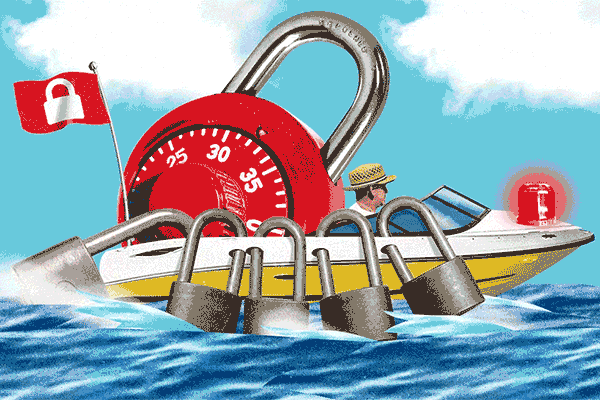The scene at the boat launch can be intimidating. You’re lined up with a bunch of boaters, and when it’s your turn, you may feel pressured to get in and out—quickly. But launching your boat doesn’t have to be stressful, says Ted Sensenbrenner, Assistant Director of Boating Safety Programs for the BoatU.S. Foundation. Just follow his tips to master this maneuver.
Take A Test Drive
“Launching your boat should be as smooth as getting in and out of an elevator,” says Sensenbrenner. But boaters backing into the loading area too fast can end up with their trailer getting jackknifed or going off course. A little practice can help you avoid those situations by giving you a feel for how your trailer handles. “Whenever possible, practice backing your trailer in an empty place, like a parking lot,” Sensenbrenner says. “That will save you some embarrassment and time later.”
Prepare For Launch
“Good ramp etiquette says that you should have your boat ready to go before you get on the ramp,” Sensenbrenner says. So once you’ve arrived at your launch location, park out of the way and get organized. Here’s how.
- Load all your supplies onto the boat—including coolers, fishing equipment, water skis, life jackets, and other things you might need for a day on the water—and stow them properly so they won’t blow away or slide around.
- Make sure you have the boat keys.
- Ensure that the battery is switched on and the fuel tank is connected so you can start your boat once it’s in the water.
- Attach the fenders, affix the lines you need for launch (including bow and stern lines), and remove all of the boat’s tie-down straps used on the way there except the winch and safety chain.
- Check that the stern plug is in place. (The last thing you want is to have your boat taking on water as you’re backing it down the ramp.)
Get In The Water
When it’s your turn to enter the ramp, here’s what to do:
- Back your trailer down in a straight line until its wheels just reach the edge of the water. (A helper should signal this to you.) The back of your boat should now be floating free. If it’s not, continue backing down the ramp until it does.
- Be careful not to back down too far. If the tow vehicle’s drive wheels are submerged, you run the risk of getting stuck.
- Once the back third of the boat begins to float, place the vehicle in park and put on the parking brake. Walk around to the bow of the boat (or have a helper do it) and release the remaining two bow connections so the boat can float free. If it doesn’t, the driver can back a little farther down the ramp and the helper can tug on the bow and stern lines to help free it if necessary.
- Once the boat is clear of the trailer, your helper can walk the boat back with the lines and tie it up to the dock while you park the car.
The only reason your car should be on the ramp is for loading or unloading; don’t linger or block anyone—and never leave your vehicle unattended. Boaters are sticklers for ramp etiquette, but they’re also happy to pitch in if you need help. “A little bit of etiquette goes a long way,” Sensenbrenner says. “If you’re prepared and efficient and ask for help when you need it, everyone’s day goes a lot better.”
Sail into savings with affordable boat insurance from GEICO and stress less with 24-hour dispatch towing service through TowBoatU.S.
Read More: The Foolproof Way To Load Your Boat Onto A Trailer
By Nicole Price Fasig










Leave a comment